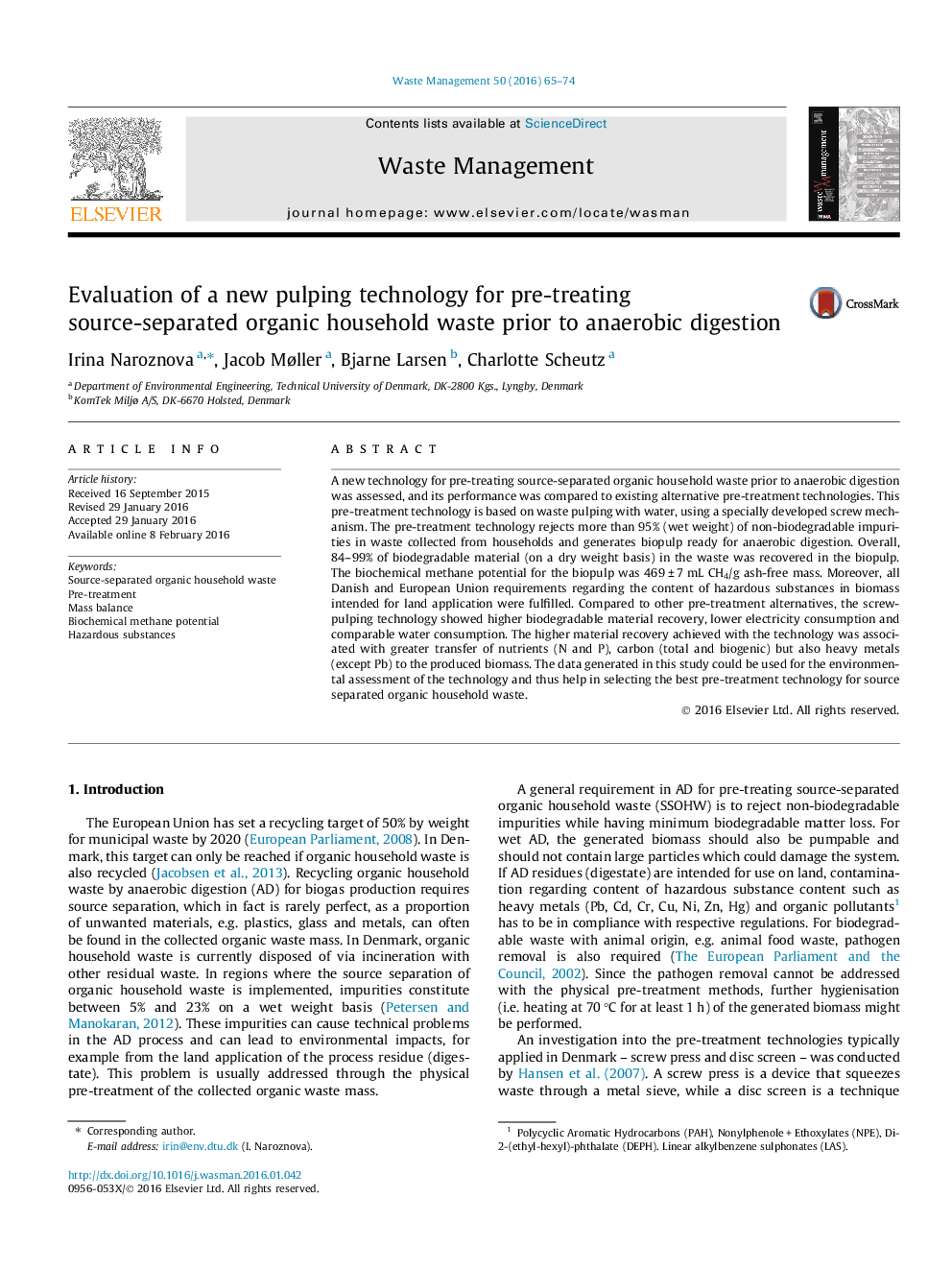| Article ID | Journal | Published Year | Pages | File Type |
|---|---|---|---|---|
| 6353485 | Waste Management | 2016 | 10 Pages |
Abstract
A new technology for pre-treating source-separated organic household waste prior to anaerobic digestion was assessed, and its performance was compared to existing alternative pre-treatment technologies. This pre-treatment technology is based on waste pulping with water, using a specially developed screw mechanism. The pre-treatment technology rejects more than 95% (wet weight) of non-biodegradable impurities in waste collected from households and generates biopulp ready for anaerobic digestion. Overall, 84-99% of biodegradable material (on a dry weight basis) in the waste was recovered in the biopulp. The biochemical methane potential for the biopulp was 469 ± 7 mL CH4/g ash-free mass. Moreover, all Danish and European Union requirements regarding the content of hazardous substances in biomass intended for land application were fulfilled. Compared to other pre-treatment alternatives, the screw-pulping technology showed higher biodegradable material recovery, lower electricity consumption and comparable water consumption. The higher material recovery achieved with the technology was associated with greater transfer of nutrients (N and P), carbon (total and biogenic) but also heavy metals (except Pb) to the produced biomass. The data generated in this study could be used for the environmental assessment of the technology and thus help in selecting the best pre-treatment technology for source separated organic household waste.
Related Topics
Physical Sciences and Engineering
Earth and Planetary Sciences
Geotechnical Engineering and Engineering Geology
Authors
Irina Naroznova, Jacob Møller, Bjarne Larsen, Charlotte Scheutz,
